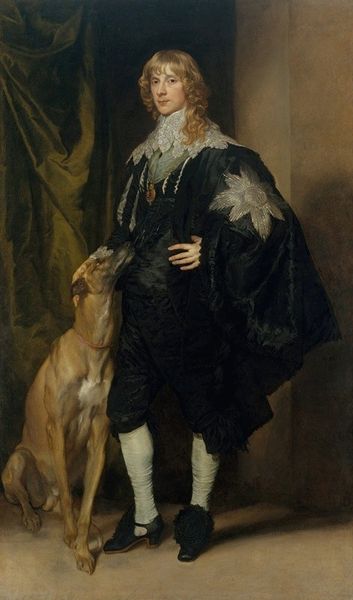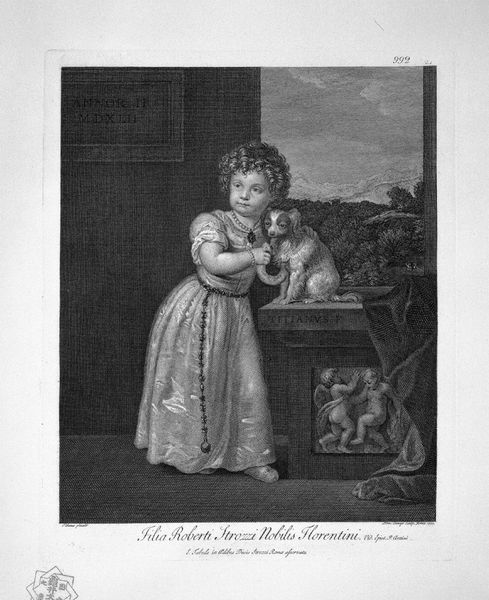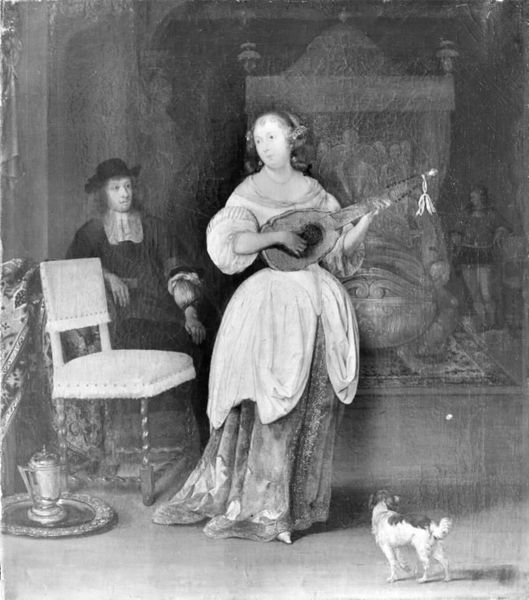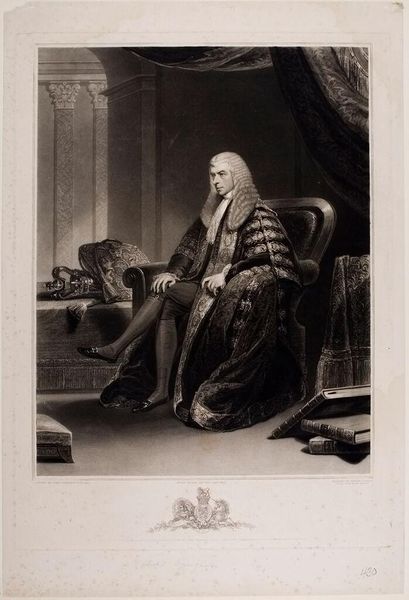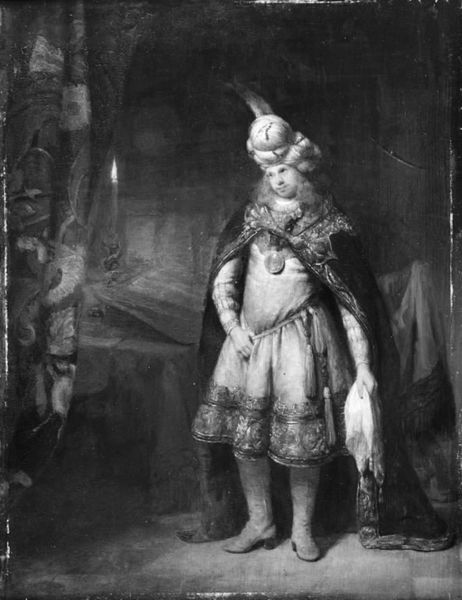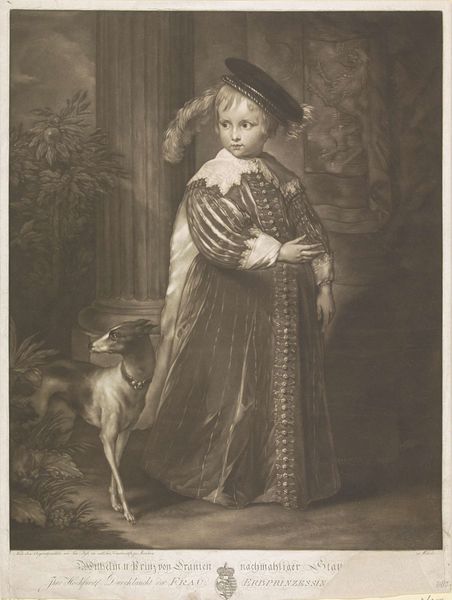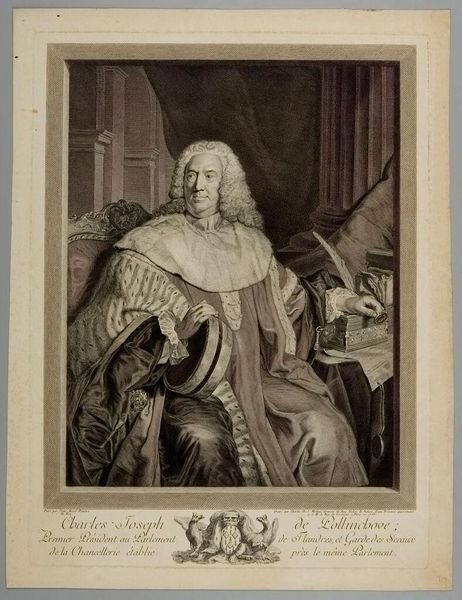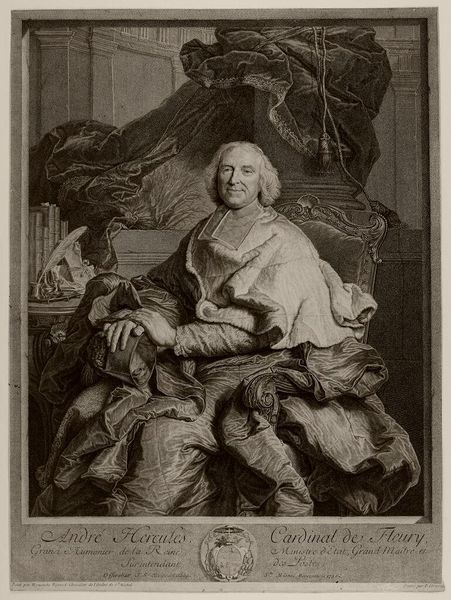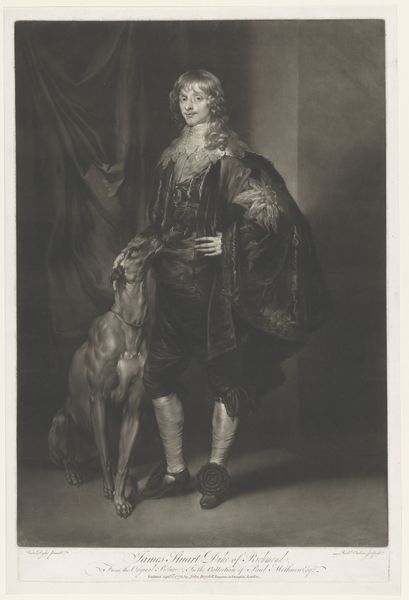
painting, oil-paint, canvas
#
baroque
#
dutch-golden-age
#
painting
#
oil-paint
#
canvas
#
black and white
#
monochrome photography
#
genre-painting
#
monochrome
#
monochrome
Dimensions: 44.5 cm (height) x 35.5 cm (width) (Netto)
Editor: Here we have Gabriel Metsu’s "Portrait of a Man," painted in the 1650s, rendered in oil on canvas. Its monochrome palette gives the piece a subdued and elegant atmosphere, though the dog brings a sense of spontaneity. What structural elements define the composition, in your opinion? Curator: Let us consider the geometry first. Note how the strong verticality of the column is offset by the sweeping fabric of the curtain. Then observe how Metsu cleverly uses the dog's placement to draw the viewer's eye along a diagonal axis. This establishes a subtle counterpoint to the implied lines of the architecture. How do you perceive the distribution of tonal values? Editor: Well, the stark contrast between light and shadow really emphasizes the texture of the man's clothing and the contours of his face, drawing our focus to his figure amidst a rather busy background. The dark hues seem concentrated on the left side, balancing the lighter tones of the landscape. Curator: Precisely. Notice how the limited palette isn't merely a constraint but rather a calculated tool to amplify subtle gradations in light. Metsu also utilizes surface treatment here: observe how the brushstrokes in the drapery contrast with the smoothness of the skin. It's the manipulation of texture that defines the volumes within this monochromatic piece, would you agree? Editor: I do. Considering how Metsu manipulates all these intrinsic elements elevates the work from a simple likeness to a captivating interplay of form, light, and texture. Thanks, this perspective allows for deeper appreciation. Curator: Indeed, the essence of art lies not just in what is represented, but how. Reflecting on form can truly enhance one's art engagement.
Comments
No comments
Be the first to comment and join the conversation on the ultimate creative platform.
